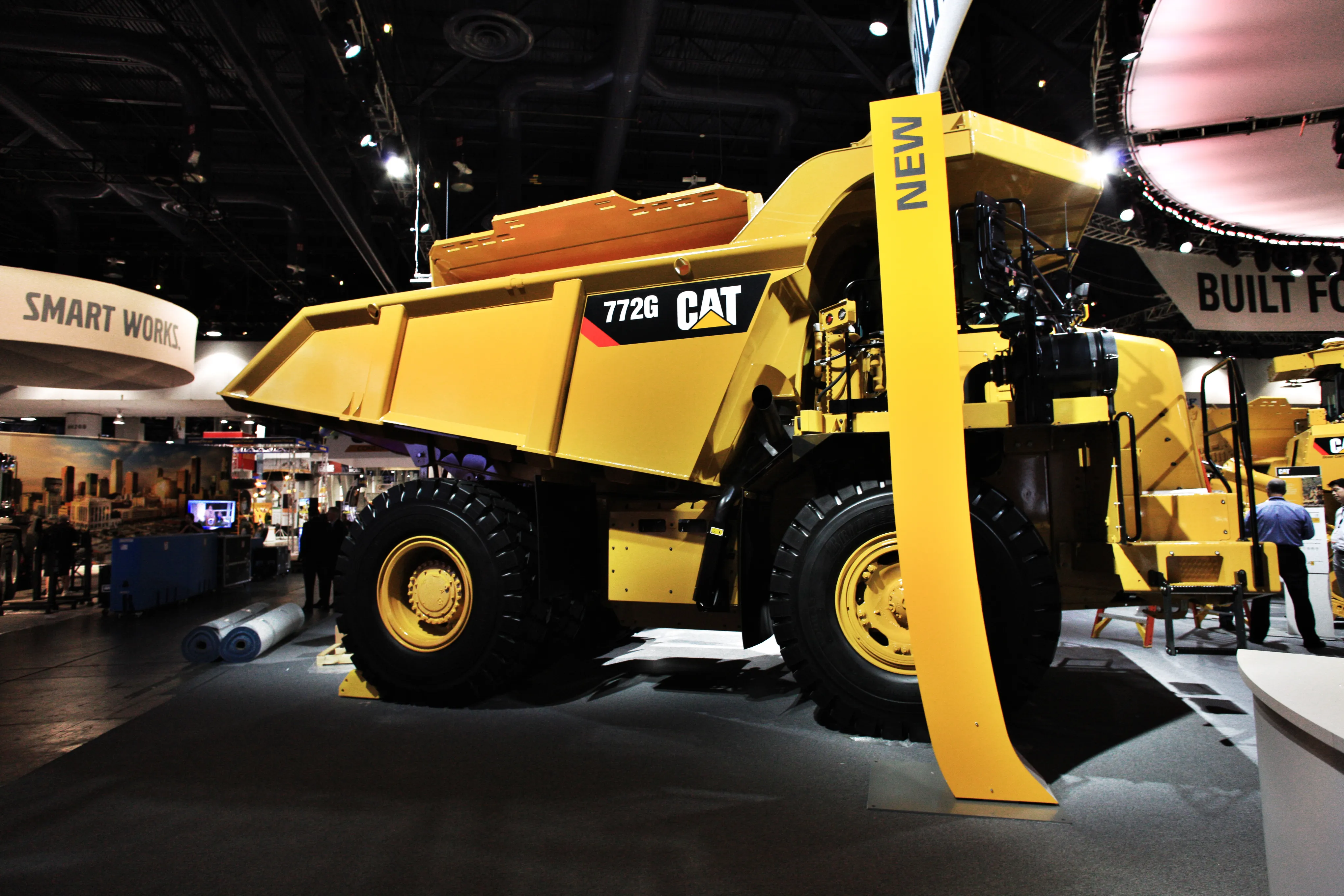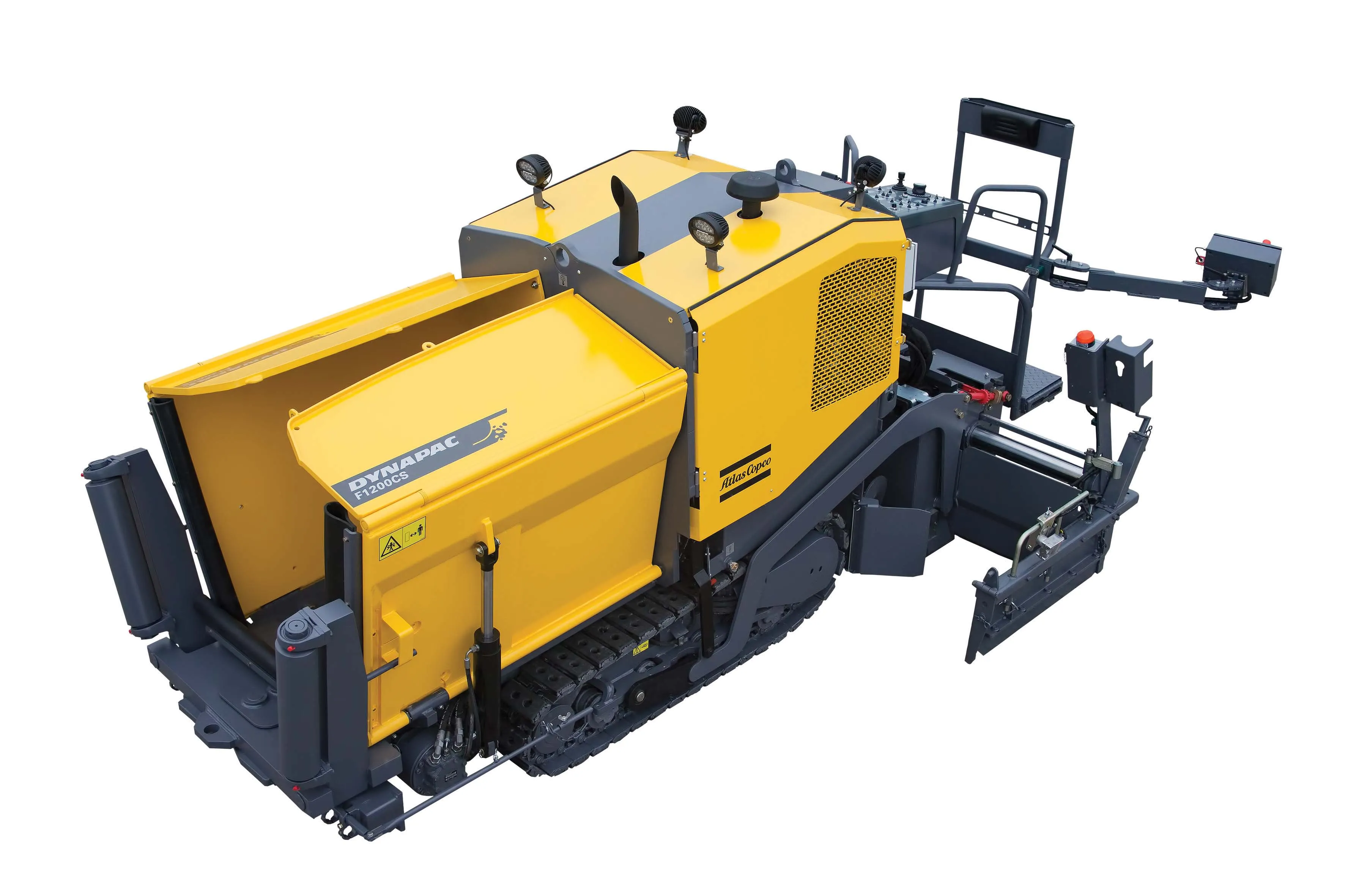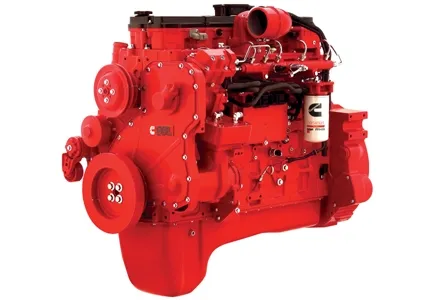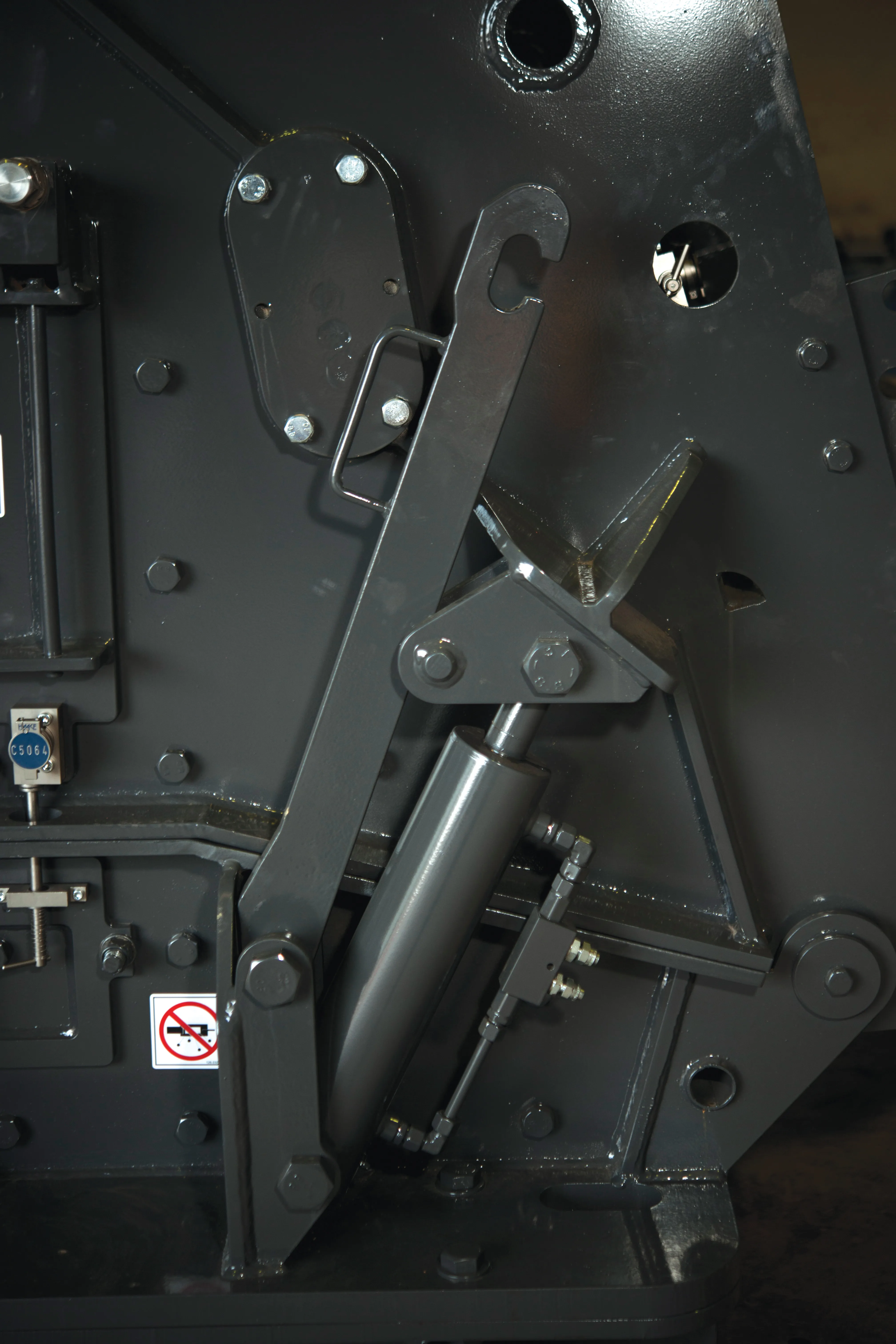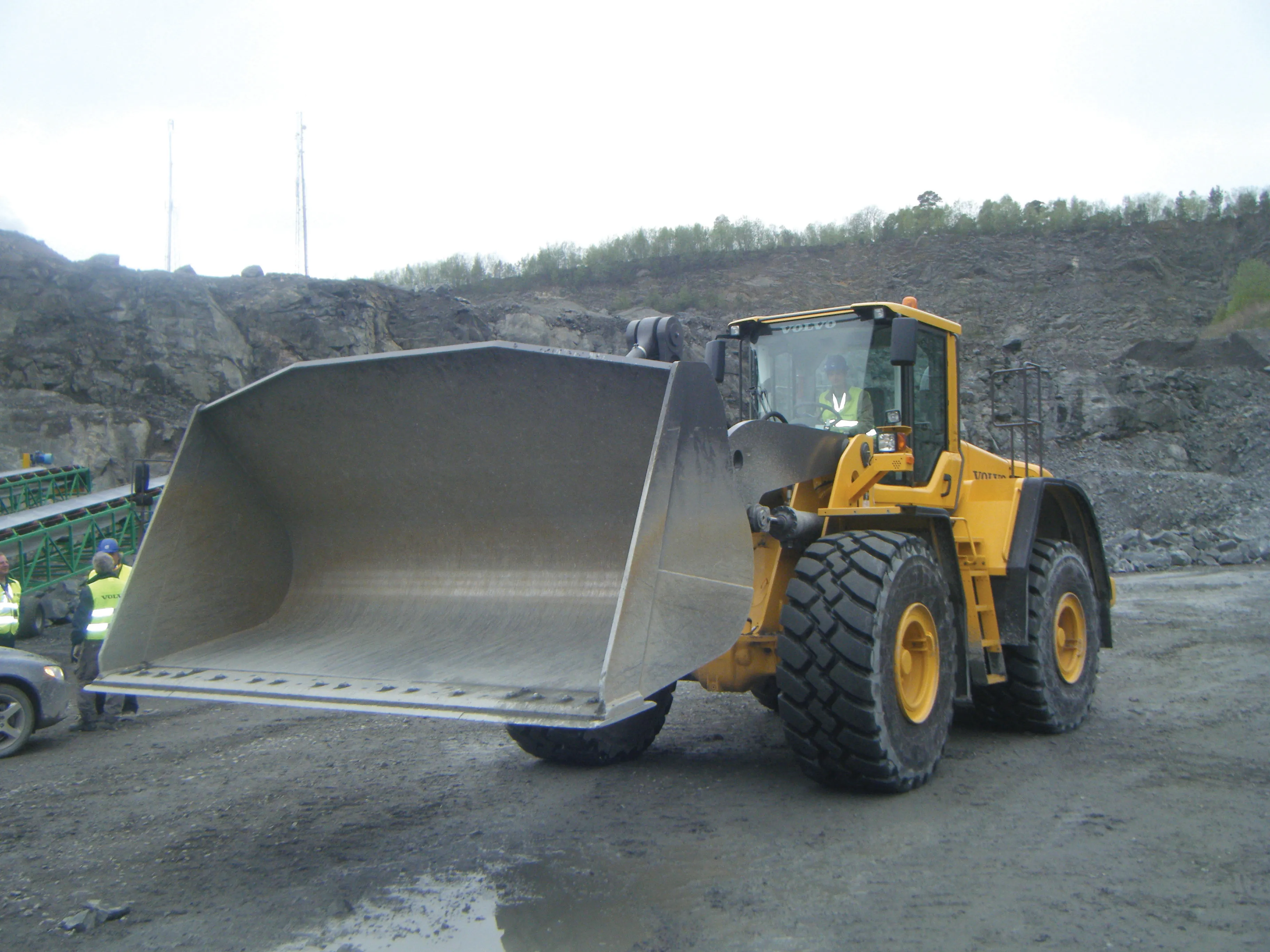
Volvo CE says that lowering fuel consumption will tackle fleet costs and deliver environmental benefits for its customers, Mike Woof reports
Volvo Construction Equipment (While Volvo's Tier 4 Interim machines will feature a price increase to cover the development costs of the technology, the new models will beat the emissions requirements and will offer fuel savings and long-term maintenance savings for a fleet operator. Improved fuel efficiency goes hand in hand with reduced emissions and is a major focus at the firm for its research and development programmes. Bill Law is global director external communications at Volvo CE and said, "There is not one single silver bullet with regard to fuel efficiency and it will be a combination of factors." Volvo CE is amongst the world market leaders in the wheeled loader sector and has no intention of losing its place but wants to capitalise on the strong points of its range. As a rule of thumb, Volvo CE machines offer high productivity, long working life and good running costs compared with the competition. One of the firm's product managers said, "We have a lot of features already built into our wheeled loaders and they are good for fuel consumption." Electronic control of shifting has improved performance and the technology has been optimised in recent years, further boosting output while reducing wear and tear on the equipment. However the sophisticated new OptiShift control system further improves transmission performance and delivers additional fuel economy according to the firm. A high torque at low engine speed is claimed, while load ensures hydraulics with variable piston pumps ensuring high working output and efficiency. The OptiShift system combines the best of mechanical and hydraulic technologies according to Volvo CE, reducing fuel consumption in load and carry operations, while increasing hill-climbing performance and productivity. The system also allows faster loading cycles while the improved shifting provides a better drive response and increases operator comfort.
The development of OptiShift is the latest in a long line of class leading features according to Volvo CE. The firm has long pioneered technology on its core products such as the ADTs and wheeled loaders. According to the firm's Arvid Rinaldo, "We were the first wheeled loader manufacturer on the market with an automatic transmission and the first with load sensing hydraulics." The OptiShift system offers other performance improvements and Rinaldo said, "Another feature we have introduced is reverse by braking. When the operator changes direction, the machine brakes and changes gears automatically. There's less stress on the brakes and the torque converter so it reduces the wear on the machine and there's reduced stress on the operator and better fuel economy too." The system has been tested extensively and on-site trials with customers have backed up Volvo CE's claims for better economy. He said, "We have a customer in Germany and they borrowed one of our new L180s." He said that based on an application with a productivity of 200tonnes/hour, the fuel consumption of the new OptiShift version of the L180F was noticeably lower at 22.8litres/hour than for the firm's existing L180F at 26.4litres/hour. Volvo CE reckons its L180F OptiShift can deliver fuel economy of around 190-200litres/day compared with 250litres/day for the previous model. Fuel consumption has been improved significantly, which will make a particular cost benefit for customers in Europe where fuel costs are high. And for countries or applications where environmental restrictions limit emissions, the new OptiShift system will also find a market. The OptiShift system will be rolled out across the wheeled loader range along with the coming Tier 4 Interim engines.
However the OptiShift system is only a part of the picture when it comes to saving fuel and 'Eco operation' is another target for Volvo CE. Rinaldo said, "We are committed to delivering solutions and future technologies. But it's one thing making the machine easy to operate and it's another getting into the operator's mindset." The firm has also set up its Eco Operator programme, in a bid to further address fleet running costs for its customers. This programme sets out to teach experienced operators how to use machines more efficiently and reduce fuel consumption, as well as cutting down on overall wear and tear. The Eco operation concept is now being taken to Volvo CE's customers and Rinaldo said, "We have workshops at the site." Although pitched as an environmental benefit, many customers will perhaps be most interested in the cost efficiency this programme offers. By minimising wear and tear on the machines Volvo says that customers can cut a major chunk from fleet running costs through extending tyre life as well as other critical components. Reducing downtime and increasing uptime similarly boosts overall machine utilisation, allowing the customer to achieve a better overall cost/tonne for its fleet over the working life of the equipment.
Productive machine operation can be achieved by using the machines more smoothly and by staying within the most efficient area of the engine speed range, with less sharp acceleration and braking. This also reduces fatigue levels for the operator and results in an additional productivity gain by maintaining output throughout the working day. Other fuel efficiency improvements can be gained from ensuring that tyres are correctly inflated, for instance. The programme includes classroom sessions, use of simulators and practical training on machines, while Volvo CE says that it can suit the syllabus to the needs of each customer as required. Contractor Skanska is one major Volvo CE customer to have implemented the programme and following training of 37 of its operators a study showed that this resulted in fuel savings on-site of 5%. Some operators were even able to reduce fuel consumption by as much as 20-25%.
The firm is also looking ahead and has a range of technologies ready for the coming Tier 4 Interim/Stage IIIB emissions regulations coming into force in 2011. These will include exhaust gas recirculation (EGR) as well as diesel particulate filtration (DPF) technologies.
In addition, Volvo CE's sister company is also rolling out a new range of on-off highway trucks aimed squarely at the construction and aggregates markets. The newly revamped FMX trucks have been beefed-up to cope with tough site applications and product manager Niklas Öberg said, "We've designed a new front. There is a lower grille to match customer needs and to match construction applications." The changes to the heavy-duty FMX trucks came following extensive discussions with a range of customers and Öberg said, "They listed needs like a bigger torque so we fitted an 11litre diesel instead of the 9litre engine we had before." The FMX also has a new bashplate to protect the engine's sump as well as a new towing device and he added that these are the strongest in the market.
Another key feature is the sophisticated I-shift gearbox, which is designed to work reliably and durably in the tough construction environment on rough roads, slopes and clay surfaces, while offering significant gains in performance. Öberg said, "Often the trucks are loaded to maximum capacity and there will be a lot of stop and go work. We have an improved gear selection capability and it gives fewer gear changes, while we also have a shortened shift speed." Load sensors ensure that the trucks start in the correct gear and will also assist on hill-starts, preventing rollback, while the system can also prevent wheelspin in slippery conditions to maximise traction. He commented, "We've optimised the trucks for the construction market."


